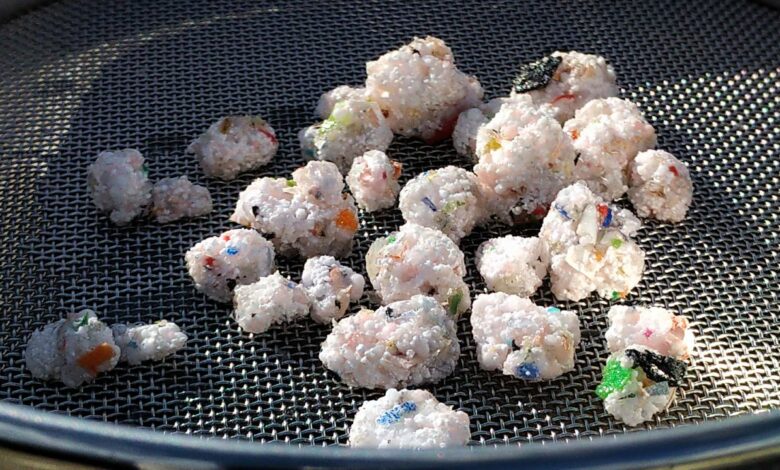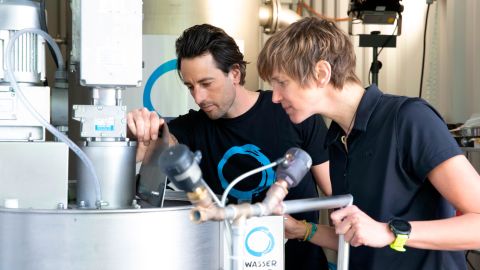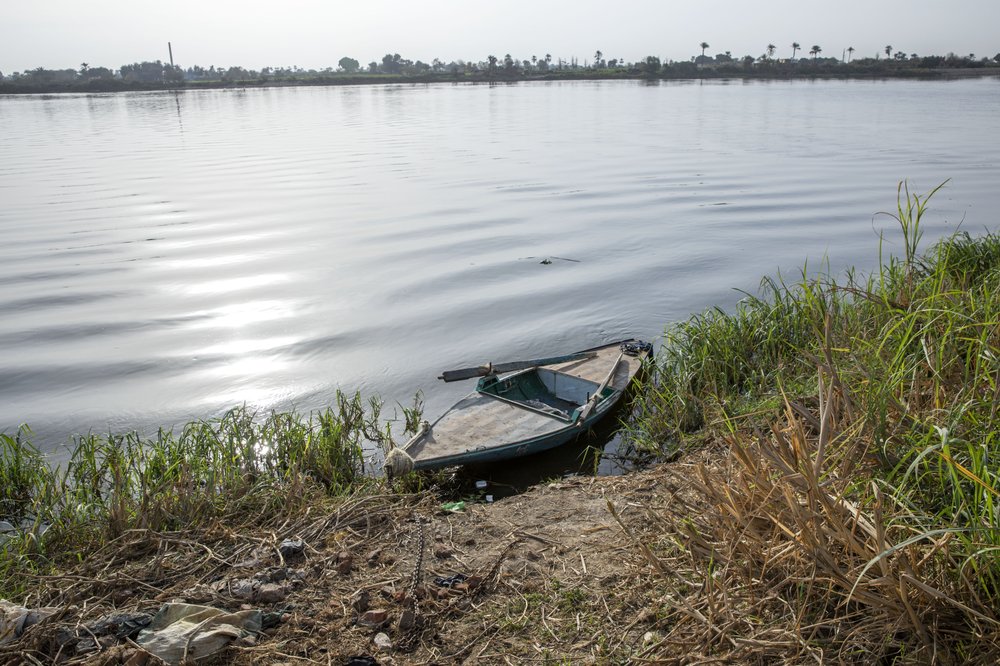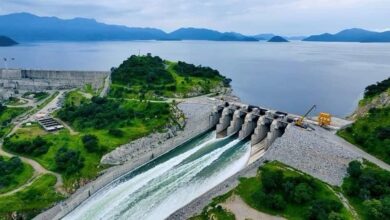
Microplastics contaminate the whole planet, from Arctic ice to Mount Everest. The tiny particles, less than 5 millimeters in diameter, are in the air we breathe, and have been found in human placenta, blood and lungs.
Scientists estimate that there are at least 14 million metric tons of microplastics on the ocean floor, and while all kinds of plastic debris are considered bad for the environment, these ones are especially hard to detect and remove because of their minuscule size.
German company Wasser 3.0, however, thinks it may have found the answer to cleaning up microplastic pollution before it reaches the ocean — using a whirlpool and a specially developed hybrid silica gel.
The process involves creating a vortex in a tank of water. A compound, called Wasser 3.0 PE-X, is added, which acts as a clumping agent, drawing together any microplastics into popcorn-shaped lumps that rise to the surface and can be skimmed off using a sieve.
“The removal technology is very straightforward,” says Dr. Katrin Schuhen, inventor and founder of Wasser 3.0, adding that the process can be used in any kind of water, from freshwater and seawater to industrial and wastewater.

The hybrid silica gel consists of silicone-based chemicals called organosilanes, and is non-toxic, says Schuhen. The organosilanes become attached to the surface of the microplastic particles and, when mixed, they quickly lump together, becoming table tennis ball-sized clusters in under five minutes.
What remains is plastic-free water and lumps of agglomerated plastic and gel that can be reused in a number of ways, for instance as insulating filler during construction.
“By using this waste as a new resource for new products, we minimize the carbon footprint and create a circular environment,” says Schuhen.
The target
Wasser 3.0 wants the technology to be used as a new step in sewage treatment plants or industrial processes. With current technology, microplastics from toothpaste, skincare products or clothes tend not to be filtered out at sewage works, according to the UN Environment Programme, and are released directly into the ocean, lakes or rivers.
Wasser 3.0, which was founded as a company in 2020 after starting as a university research project, is already in operation at a municipal wastewater treatment plant in Landau-Mörlheim, Germany, and at a paper-processing factory, with other industrial clients currently running feasibility studies. During a 12-month trial at the Landau site, around 600 pounds of microplastics were removed, says Schuhen.
Other methods for microplastics removal exist, such as membrane filtration and dissolved air flotation, but both can be laborious and expensive, according to Schuhen. Some scientists have suggested using magnetic fluids to separate microplastics from water or sticky film made of bacteria, but these processes are in their early stages.
Schuhen says that Wasser 3.0 is an affordable, scalable and simple solution to the global problem of microplastic pollution. The company is not for-profit, she adds, as it reinvests any proceeds back into research.
“Our mission is to keep the world’s water supply safe,” says Schuhen.




